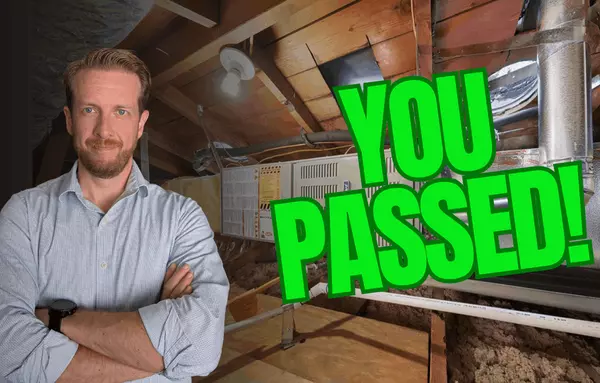Mastering the Home Inspection Process: A Seller's Guide

Mastering the Home Inspection Process: A Seller's Guide
Key Takeaways
- Understand what inspectors look for to better prepare your home.
- Be aware of common surprises that may arise in inspection reports.
- Emotional preparedness is crucial; the inspection is a chance for negotiation, not a final verdict.
Navigating the home inspection process can feel daunting, but with the right strategies, sellers can turn potential pitfalls into opportunities. This guide will provide you with essential tips on how to prepare for the inspection, negotiate effectively, come out on top in your real estate journey and ensure a successful closing.
Understanding the Home Inspection Process
The home inspection process is a critical step for sellers in Katy, TX. It’s not just about identifying issues; it’s also about showcasing your home in the best light. Sellers need to understand that this is an opportunity to demonstrate the value of their property.
During the inspection, the inspector will thoroughly evaluate the home, from the roof to the foundation. This assessment will help buyers make informed decisions. As a seller, understanding what to expect can ease some anxiety.
What Inspectors Look For
Home inspectors have a checklist that covers various aspects of your property. They evaluate:
-
- Structural Integrity: Inspectors check for cracks in walls, sagging floors, and the overall condition of the foundation.
- Electrical Systems:They ensure that wiring is up to code and check for the presence of GFCI outlets in appropriate areas.
- Plumbing: Inspectors look for leaks, water pressure issues, and the condition of water heaters.
- HVAC Systems: They assess heating and cooling systems to ensure they are functioning efficiently.
- Appliances: Inspectors test major appliances to confirm they work correctly.
Understanding these areas will help you prepare your home and potentially address issues before the inspection takes place.
Common Surprises in Inspection Reports
Even the most vigilant seller can be caught off guard by what shows up on an inspection report. Common surprises include:
-
- Minor electrical issues, such as non-functioning outlets or outdated wiring.
- Plumbing leaks that may have gone unnoticed.
- HVAC inefficiencies that could indicate a need for maintenance.
- Structural concerns that may require a professional assessment.
Being aware of these possibilities allows you to proactively address issues, making the inspection process smoother.

Preparing for Inspection Day
Preparation is key to a successful home inspection. Here are some steps you can take:
-
- Gather Documentation: Compile any recent work done on the home, including warranties, receipts, and maintenance records. This helps reassure potential buyers.
- Clear Access: Ensure that the inspector has easy access to critical areas like the attic, basement, and utility rooms. Remove any clutter that could impede their work.
- Secure Pets: If you have pets, consider taking them with you or securing them in a safe space during the inspection.
Taking these steps not only facilitates the inspection process but also reflects positively on you as a seller.
The Emotional Landscape of Inspections
The inspection phase can be emotionally charged for sellers. It often feels like an "us versus them" situation. Remember, the inspection is simply a tool for buyers to assess the condition of the home.
As a seller, it’s essential to remain calm and focused. The A List Team is here to support you through this process, helping you navigate any challenges that arise. Keep in mind that many items on the inspection report can be negotiated, and not all requests need to be met.
By staying informed and prepared, you can approach this stage with confidence. The inspection is just one piece of the puzzle in your real estate journey.
Leveraging the Seller's Disclosure
The seller's disclosure is a powerful tool in your negotiation arsenal. By filling it out prior to listing your property, you not only protect yourself from future liability, but you also set a clear expectation for potential buyers. This document serves as a formal acknowledgment of any known issues, which can significantly influence negotiations during and after the inspection.
For instance, if you disclose a minor issue like a rusted HVAC pan, buyers cannot later demand repairs for it after the inspection. In Texas, most real estate transactions are conducted in "AS IS" condition, meaning buyers accept the property's condition as it stands at the time of purchase. This makes your seller's disclosure even more crucial, as it helps frame the context in which buyers evaluate the inspection report.
Negotiating After the Inspection
Once the inspection report is in hand, negotiations often begin. It’s important to remember that not all requests are reasonable. Buyers may request significant repairs or concessions based on the findings, but you are under no obligation to agree to every demand. The key is to assess the severity of the issues presented and negotiate accordingly.
For example, if the report indicates an old electrical panel, the buyer might ask for a substantial discount or for the panel to be replaced entirely. In such cases, it's essential to weigh the request against the actual need for repairs and the costs involved. The A List Team can help you navigate these discussions, ensuring that you are not giving in to unreasonable demands.
Addressing Unreasonable Requests
During negotiations, you may encounter requests that seem excessive or unwarranted. It's crucial to evaluate these requests critically. For example, if a buyer demands repairs that are based on modern codes that your property, built in the 1960s, cannot realistically meet, it’s time to push back.
In these situations, collaboration with your agent is vital. Together, you can clarify which issues are legitimate concerns and which are simply unrealistic expectations. By presenting a well-reasoned counterargument, you can protect your interests while still working towards a satisfactory agreement.
Getting Estimates from Contractors
When faced with costly repair requests, obtaining estimates from contractors can provide clarity. If a buyer claims a repair will be $20,000, getting a professional opinion can help you determine the actual cost. Often, what appears to be a major repair can be resolved with a minor fix.
Engaging one or two contractors for estimates allows you to counter inflated claims effectively. For instance, if an HVAC system needs attention, a contractor might identify a simple $300 fix instead of a complete overhaul. This data empowers you during negotiations, helping you make informed decisions about repairs and concessions.

Wrapping Up the Inspection Period
As the inspection period concludes, it's essential to summarize the negotiations and finalize agreements. This stage is about ensuring that both parties are on the same page regarding any repairs or concessions. Clear communication is key; misunderstandings can lead to complications down the road.
Remember, the goal is to reach a compromise that satisfies both you and the buyer. With the support of the A List Team, you can navigate this process smoothly, ensuring that you are prepared for the next steps in your real estate journey.
If you're navigating the home inspection process and have questions, don’t hesitate to reach out. You can call us or fill out a form on our website. The A List Team is here to help you every step of the way in your real estate journey in Katy, TX.
Categories
Recent Posts












